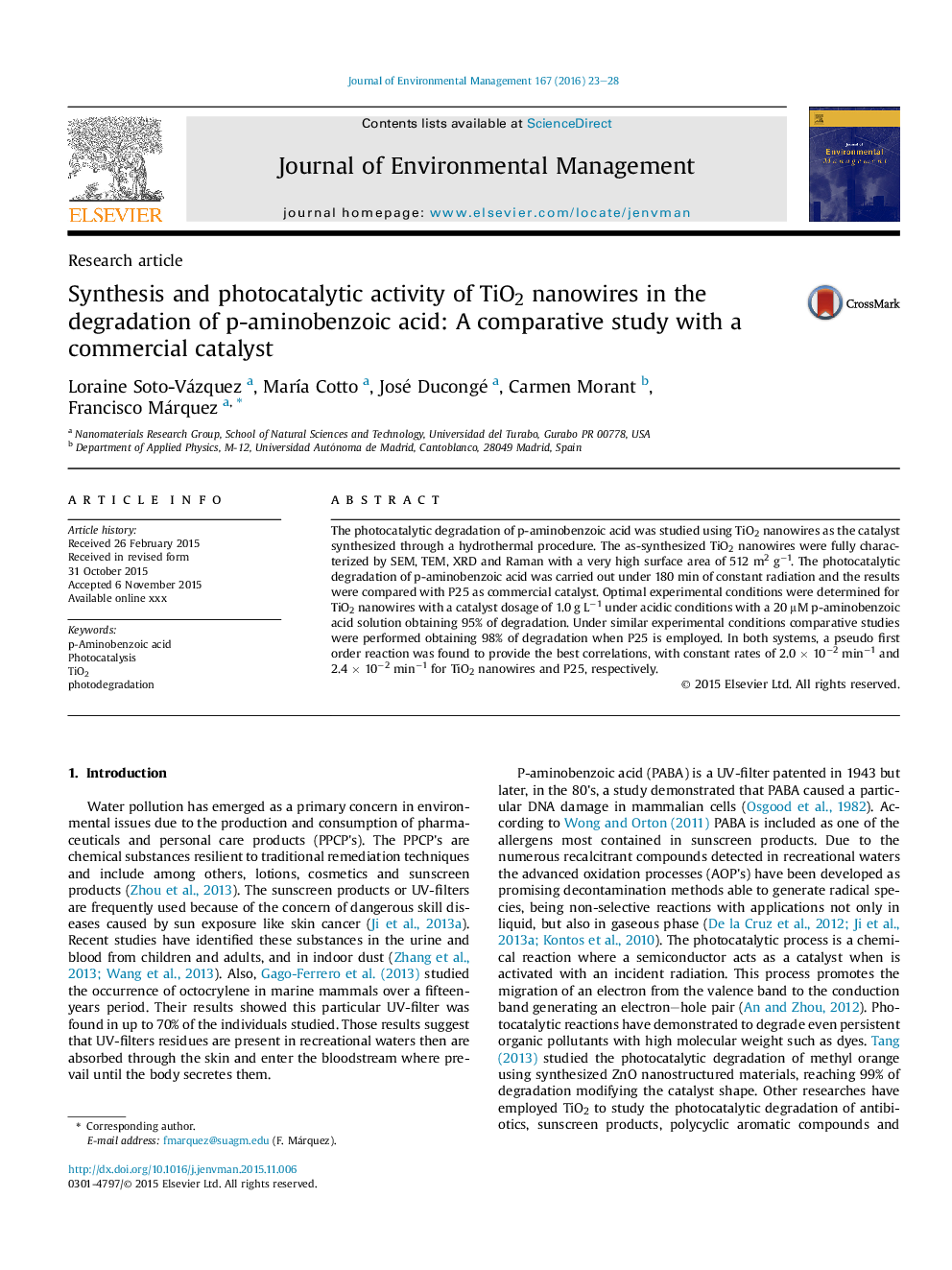| Article ID | Journal | Published Year | Pages | File Type |
|---|---|---|---|---|
| 7481082 | Journal of Environmental Management | 2016 | 6 Pages |
Abstract
The photocatalytic degradation of p-aminobenzoic acid was studied using TiO2 nanowires as the catalyst synthesized through a hydrothermal procedure. The as-synthesized TiO2 nanowires were fully characterized by SEM, TEM, XRD and Raman with a very high surface area of 512 m2 gâ1. The photocatalytic degradation of p-aminobenzoic acid was carried out under 180 min of constant radiation and the results were compared with P25 as commercial catalyst. Optimal experimental conditions were determined for TiO2 nanowires with a catalyst dosage of 1.0 g Lâ1 under acidic conditions with a 20 μM p-aminobenzoic acid solution obtaining 95% of degradation. Under similar experimental conditions comparative studies were performed obtaining 98% of degradation when P25 is employed. In both systems, a pseudo first order reaction was found to provide the best correlations, with constant rates of 2.0 Ã 10â2 minâ1 and 2.4 Ã 10â2 minâ1 for TiO2 nanowires and P25, respectively.
Related Topics
Physical Sciences and Engineering
Energy
Renewable Energy, Sustainability and the Environment
Authors
Loraine Soto-Vázquez, MarÃa Cotto, José Ducongé, Carmen Morant, Francisco Márquez,
